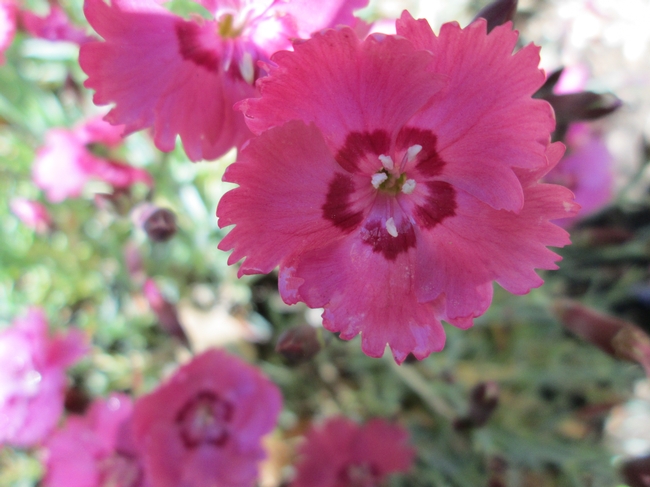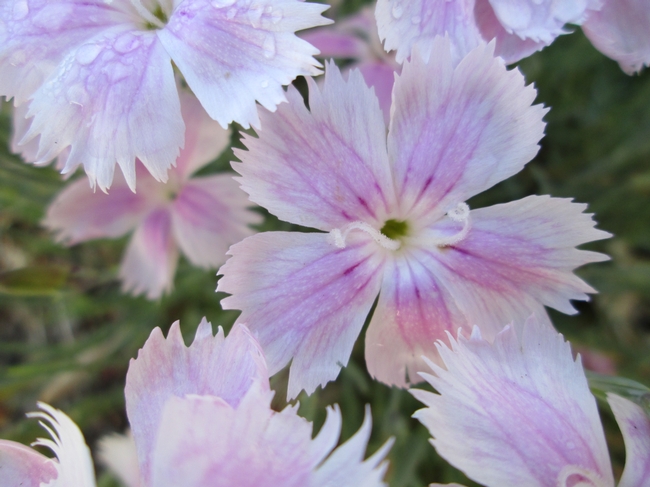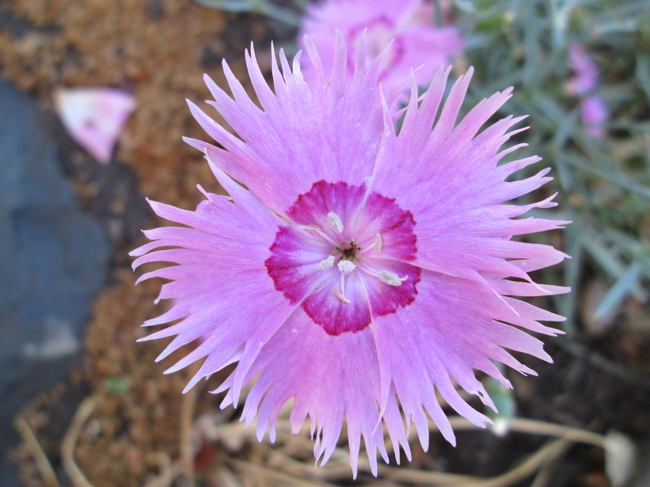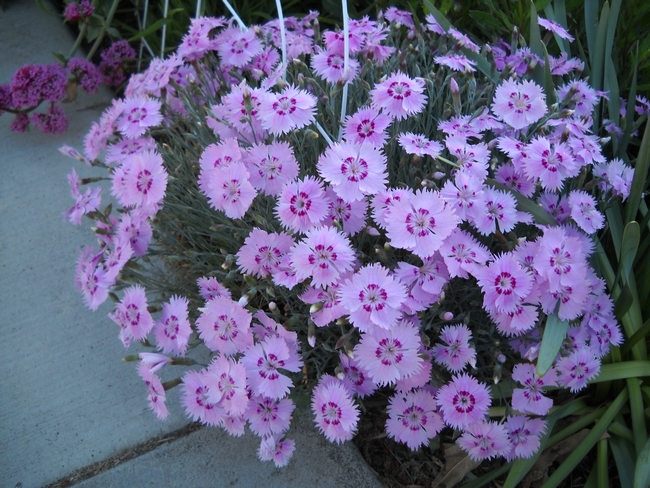Some of the most rewarding plants that I have grown in recent years came from a packet of “Cottage Pink” seeds (Parks Seed Co.) which I ordered for no other reason than I needed a small purchase to get free shipping on a vegetable order!
These pinks, Dianthus plumarius, are traditional cottage garden flowers from Europe where they have been cultivated for hundreds of years. They belong to the Dianthus genus which contains over 300 species together with numerous hybrids including such favorites as carnations and Sweet Williams.
I planted the seeds in late winter and had an exceptionally high germination rate. I was careful not to overwater the seedlings, and they grew well and transplanted easily. Although perennials, they all flowered in their first year.
Cottage pinks are characterized by perennial mats of gray needle-like foliage up to 12 inches wide, although the growth habits of individual plants are not completely consistent, some being very tightly growing while others are more lax. Strongly perfumed single flowers in shades of pink or white with varying petal structure and flower patterns are held upright on 6”-8” stems. These are long lasting, and each flower has a couple of dormant buds immediately beneath it which provides a long flowering season which lasts, with regular deadheading, from April to September in the Owens Valley. They don't flop, and so far I have never had any pests or diseases bother them.



All my plants have now survived several winters in Bishop (USDA Zone 7b), but just one of the plants goes extremely brown in winter and looks as though it has died, only to come back very vigorously when the temperatures rise, although that particular one blooms later than the rest.
My only problem was that until they flowered I did not know which would produce the most interesting flowers, and since I had run out of space in the borders I was forced to plant them out in the vegetable garden!
Some nurseries carry named varieties, often heavily marked or with stronger colors e.g. 'Firewitch', or related species such as Dianthus gratianopolitanus, and D. Alwoodii both of which perform well.
Cottage Pinks are hard to beat – long bloom season, perfume, good cut flowers, neat foliage and not prone to pests and diseases. I highly recommend them!
